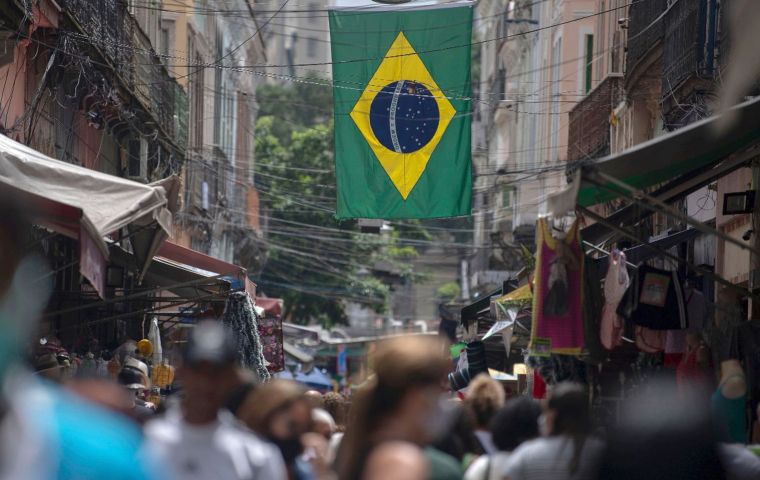MercoPress. South Atlantic News Agency
Brazilian economic activity recovers to pre-pandemic level
 The seasonally adjusted index in January stood at 140.3, higher than the 140.02 from February last year
The seasonally adjusted index in January stood at 140.3, higher than the 140.02 from February last year Brazilian economic activity rose sharply in January, a central bank index showed on Monday, indicating that Latin America’s largest economy has not only recovered all its pandemic-related decline but is now back to the size it was over five years ago.
The IBC-Br economic activity index, a leading indicator of gross domestic product, rose a seasonally adjusted 1.04% in December, more than double the 0.4% increase forecast in a poll of economists.
The seasonally adjusted index in January stood at 140.3, higher than the 140.02 from February last year, before the COVID-19 pandemic brought the economy to a standstill and triggered the biggest annual decline in activity since 1990.
That is also the highest level since May 2015, according to central bank data.
The central bank chart shows, however, that Latin America’s largest economy by the IBC-Br index measure is still 5.7% smaller than it was at its peak in December 2013, on a seasonally adjusted basis.
Despite the strong start, the outlook for this year remains uncertain, as a deadly second wave of the pandemic sweeps the country, unemployment remains high, and emergency government aid to millions of poor people approved by Congress last week will be only a fraction of last year’s payments.
Economy Minister Paulo Guedes said last week the economy can grow 3-3.5% this year. The IBC-Br index was down 0.46% on a non-seasonally adjusted basis from January last year, the central bank said.




Top Comments
Disclaimer & comment rulesCommenting for this story is now closed.
If you have a Facebook account, become a fan and comment on our Facebook Page!